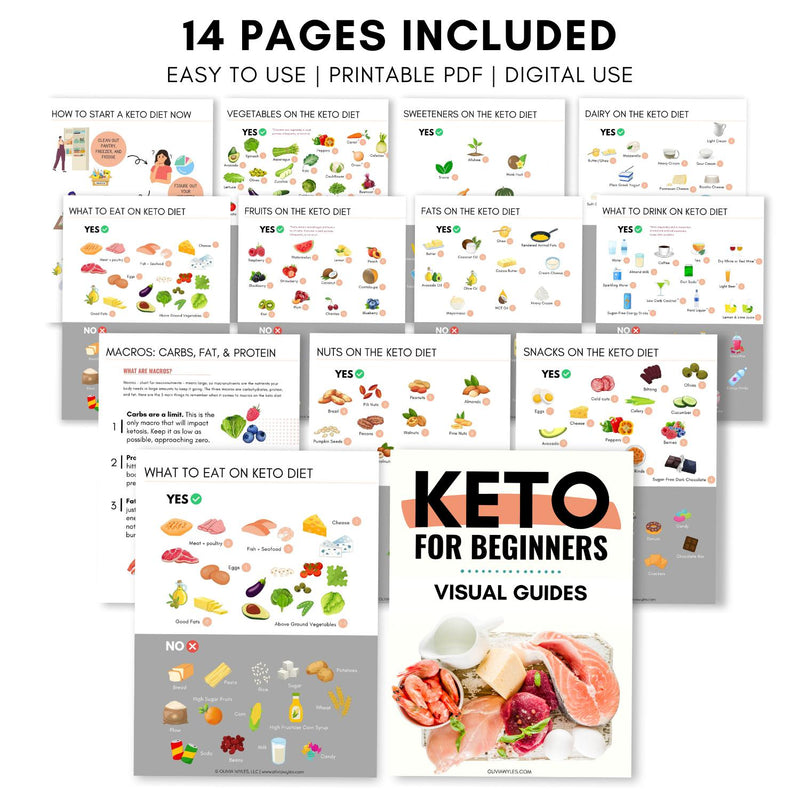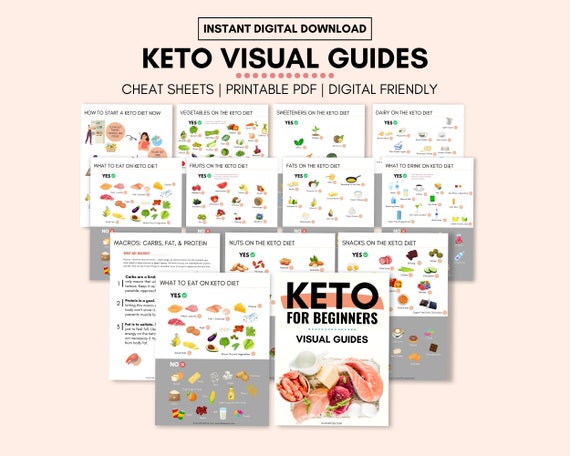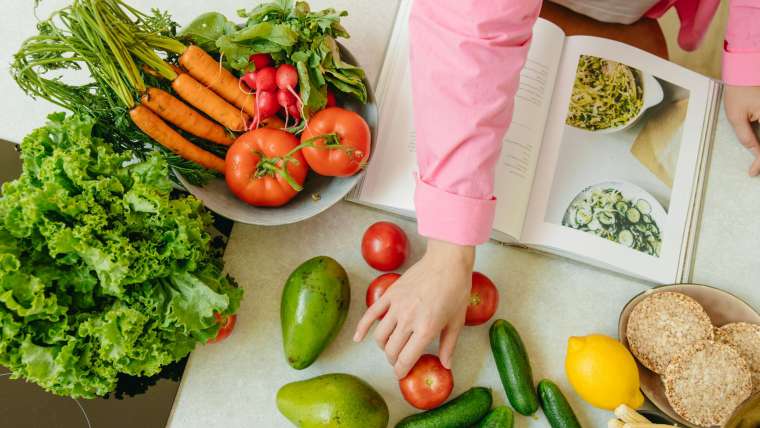Discover the secrets to successful Keto dieting with our Beginner’s Keto Plan – your ultimate Quick Start Guide awaits!
Table of Contents
Welcome to the beginner’s guide to the keto diet! If you’ve ever heard about the keto diet and wondered what all the buzz is about, you’re in the right place. In this quick start guide, we’ll break down the basics of the keto diet for beginners like you. Whether you’re looking to lose weight, boost your energy levels, or just improve your overall health, the keto diet can be a great option to explore.
Let’s dive into the world of the keto diet together and discover how this simple yet effective way of eating can help you achieve your health and wellness goals. The keto diet isn’t as complicated as it may seem at first, and with the right knowledge and tools, you’ll be on your way to success in no time.
What Is Keto?
The keto diet, short for ketogenic diet, is a way of eating that focuses on consuming low-carb, high-fat foods. When you follow a keto diet, your body enters a metabolic state called ketosis, which means it burns fat for fuel instead of carbohydrates.
The Science of Keto
Let’s break it down in a simple way: normally, our bodies use carbohydrates from foods like bread, pasta, and sugar for energy. But when you reduce your carb intake and increase your fat consumption on a keto diet, your body starts producing molecules called ketones. These ketones become your new source of energy, leading to fat loss and improved health.
Benefits of a Keto Diet
There are many benefits to following a keto diet, especially for beginners. Some of these benefits include weight loss, increased energy levels, better mental focus, and even lower blood sugar levels. By switching to a keto lifestyle, you can see positive changes in your overall health and well-being.
Starting Your Keto Journey
When starting your keto journey, it’s essential to set realistic goals that align with your health and nutrition needs. Begin by understanding why you want to adopt a ketogenic lifestyle. Whether it’s for weight loss, improved energy levels, or overall well-being, establishing clear and achievable goals will help you stay focused and motivated on your journey.
Clearing the Kitchen
One of the first steps in embarking on a keto diet is to clear your kitchen of non-keto foods. Removing temptations like sugary snacks, processed foods, and high-carb items will make it easier for you to stick to your new eating plan. Stock up on keto-friendly options like meats, cheeses, nuts, and low-carb vegetables to set yourself up for success.
Keto Diet Foods
When following a keto diet, it’s essential to focus on foods that are low in carbohydrates and high in healthy fats. Some keto-friendly options include:
- Meats: such as chicken, beef, and fish
- Cheeses: like cheddar, mozzarella, and cream cheese
- Low-carb Vegetables: such as spinach, broccoli, and cauliflower
- Healthy Fats: like avocados, olive oil, and coconut oil
- Nuts and Seeds: such as almonds, chia seeds, and flaxseeds
- Eggs: a versatile protein source
Foods to Avoid
On the keto diet, it’s important to steer clear of high-carb foods that can kick you out of ketosis. Some foods to avoid include:
- Bread: including whole grain and white flour varieties
- Pasta: like spaghetti, fettuccine, and macaroni
- Sugary Snacks: such as candies, cookies, and cakes
- Starchy Vegetables: like potatoes, corn, and peas
- Sugary Drinks: including soda, fruit juice, and sweetened tea
- Processed Foods: like chips, crackers, and packaged snacks
Making a Simple Keto Meal Plan
Planning your meals is an essential part of following a keto diet successfully. By preparing a simple and easy-to-follow meal plan, you can stay on track with your goals and ensure you’re eating the right foods to keep your body in ketosis.
Keto Meal Planning Tips
When creating your weekly meal plan, it’s important to focus on foods that are low in carbohydrates and high in healthy fats. Here are some tips to help you plan your keto meals effectively:
- Choose a variety of protein sources like chicken, beef, and fish.
- Incorporate plenty of non-starchy vegetables such as spinach, broccoli, and cauliflower.
- Include healthy fats like avocados, olive oil, and nuts in your meals.
- Avoid high-carb foods like bread, pasta, and sugary snacks.
Sample One-Day Keto Menu
Here’s an example of what a day on a keto diet might look like:
- Breakfast: Scrambled eggs with spinach and avocado
- Lunch: Grilled chicken salad with mixed greens and olive oil dressing
- Snack: Handful of almonds
- Dinner: Baked salmon with asparagus drizzled with butter
Remember to drink plenty of water throughout the day and listen to your body’s hunger cues to determine when to eat.
Understanding Macros
When it comes to following a keto diet, understanding macros is crucial for your success. But what exactly are macros? Let’s break it down in simple terms for you.

Image courtesy of shop.oliviawyles.com via Google Images
What are Macros?
Macros, short for macronutrients, are the three main components of food that provide energy: carbohydrates, proteins, and fats. Each macro plays a vital role in your body’s functioning and impacts your overall health.
Calculating Your Needs
As you embark on your keto journey, it’s essential to know how to calculate the right amount of macros for your body. The standard macro breakdown for a keto diet is typically around 70-75% fats, 20-25% protein, and 5-10% carbohydrates.
Calculating your macros involves determining the right balance to ensure you stay in a state of ketosis, where your body burns fat for fuel instead of carbohydrates. Tracking your daily intake of fats, proteins, and carbs can help you adjust your diet accordingly to meet your goals.
By understanding how to calculate and monitor your macros, you can optimize your keto diet plan and achieve the desired results. Stick to your macros, and you’ll be on your way to success in no time.
Staying in Ketosis
When you’re following a keto diet, one of the essential goals is to stay in a state of ketosis. This means your body is burning fat for fuel instead of carbohydrates. Here are some tips and tricks to help you maintain ketosis and reap the benefits of this lifestyle.
| Meal | Food | Amount |
|---|---|---|
| Breakfast | Scrambled Eggs | 2 eggs |
| Avocado | 1/2 avocado | |
| Lunch | Grilled Chicken Salad | 4 oz chicken, mixed greens, cherry tomatoes, olive oil dressing |
| Snack | Almonds | 1 oz |
| Dinner | Salmon with Asparagus | 6 oz salmon, roasted asparagus |
Signs You’re in Ketosis
How do you know if you’re successfully in ketosis? There are a few physical signs that can clue you in. Some people experience increased energy levels and mental clarity when they’re in ketosis. You might also notice your breath smelling fruity or metallic, which is a result of your body producing ketones.
Common Mistakes to Avoid
Although the keto diet is effective, there are some common mistakes that can kick you out of ketosis. One of the biggest errors is consuming too many carbs. Make sure to keep track of your carb intake and stick to the recommended amount. Additionally, not eating enough fats can also hinder your progress. Remember, fats are your main source of energy on a keto diet, so be sure to include them in your meals.
Meal Prep and Snacking
Meal preparation, also known as meal prep, is a fantastic way to stay on track with your keto diet. By planning and cooking meals in advance, you can ensure that you always have delicious and healthy options available when hunger strikes. Let’s explore how meal prep can make sticking to your keto plan a breeze.

Image courtesy of www.pinterest.com via Google Images
Meal Prep 101
Meal prep begins with setting aside time to plan and cook your meals for the week. Start by deciding on the recipes you want to make, create a shopping list of keto-friendly ingredients, and carve out a few hours to cook and portion out your meals. Consider investing in some reusable meal prep containers to make storing and transporting your meals a cinch.
Keto-Friendly Snacks
Snacking can be a challenge on a keto diet, but there are plenty of delicious options to satisfy your cravings. Opt for snacks that are high in fat and low in carbs, such as nuts, seeds, cheese, and olives. Preparing your snacks in advance and portioning them out can help prevent overeating and ensure you always have a satisfying keto-friendly option on hand.
Navigating Social Situations
When you’re on a keto diet, dining out at restaurants can feel like a challenge. However, there are still plenty of keto-friendly options to choose from. Look for dishes that are centered around protein, like grilled chicken or steak, and ask for veggies or salads instead of carb-heavy sides like fries or pasta. You can also request dressings and sauces on the side to control the amount you consume.
Keto and Friends
It’s common to feel a bit out of place when your friends are ordering pizza or ice cream while you’re sticking to your keto meal plan. Remember, it’s important to prioritize your health goals, but that doesn’t mean you can’t enjoy social situations. Try to suggest places where you know you can find keto-friendly options, like a burger joint where you can have a lettuce wrap instead of a bun. And if your friends are supportive, they might even be willing to explore new restaurants with keto-friendly menus!
Conclusion
Embarking on a keto diet journey can be both exciting and beneficial for beginners looking to make a positive change in their health and lifestyle. By understanding the fundamentals of the keto diet and following a simple meal plan, you can set yourself up for success and reap the rewards of this low-carb, high-fat eating approach.

Image courtesy of www.etsy.com · In stock via Google Images
Remember, when starting out on a keto diet, it’s essential to focus on setting realistic goals, stocking your kitchen with keto-friendly foods, and staying consistent with your meal planning. By staying in ketosis — the state where your body burns fat for fuel — you can achieve weight loss, increased energy levels, and other health benefits.
As you navigate social situations and potential challenges like cravings or ‘keto flu’, remember to stay committed to your goals and make smart choices when selecting your meals and snacks. With perseverance and dedication, you can make the keto lifestyle work for you.
Ultimately, by following these guidelines and staying informed about the keto diet, you can transform your health and well-being. So, get ready to embrace the keto journey with enthusiasm and determination, and enjoy the positive impact it can have on your life.
Frequently Asked Questions (FAQs)
How quickly can I see results from keto?
Results from the keto diet can vary from person to person. Some beginners may start noticing changes in their weight and energy levels within the first week of starting the diet. However, it is important to remember that everyone’s body is different, and it may take a few weeks for others to see noticeable changes. Consistency with the keto diet and staying within your macronutrient goals are key factors in seeing results.
Can I ever eat carbs again?
While the keto diet restricts carb intake in the beginning to achieve ketosis, it is possible to reintroduce some carbohydrates once you have reached your health goals. Many people follow a cyclical keto diet where they cycle between periods of higher carb intake and strict keto days. It is essential to listen to your body and monitor how different foods affect you to find the balance that works best for you.
What if I feel tired or get ‘keto flu’?
Feeling tired or experiencing ‘keto flu’ symptoms like headaches, fatigue, or dizziness is common when transitioning to a ketogenic diet. This is often due to your body adapting to using fat for fuel instead of carbs. To alleviate these symptoms, staying hydrated, consuming enough electrolytes, and gradually increasing your fat intake can help. Most people find that these symptoms subside within a few days to a week as their body adjusts to ketosis.






